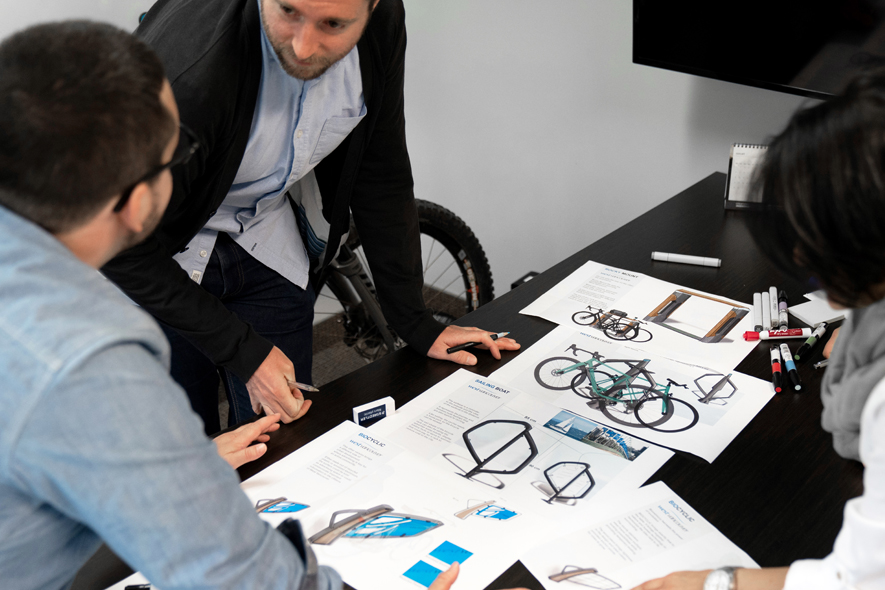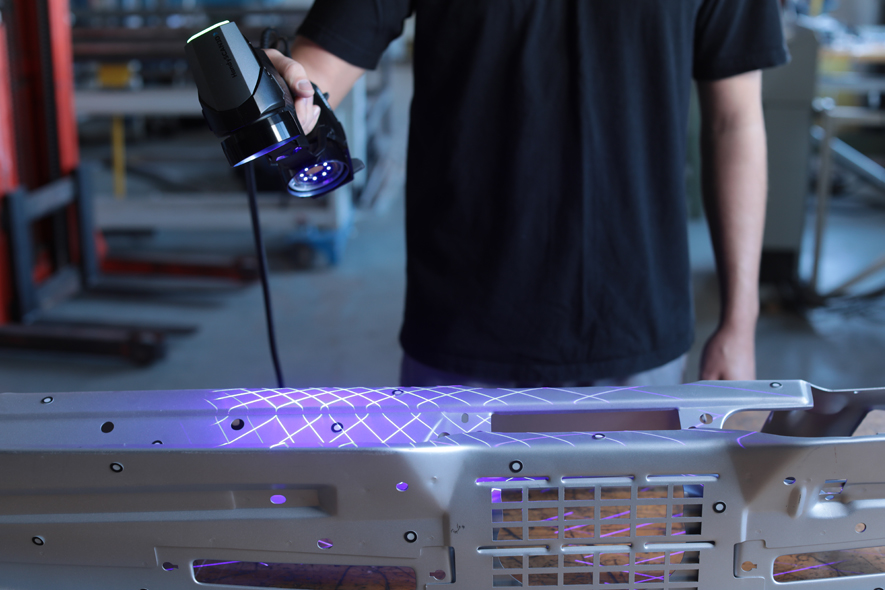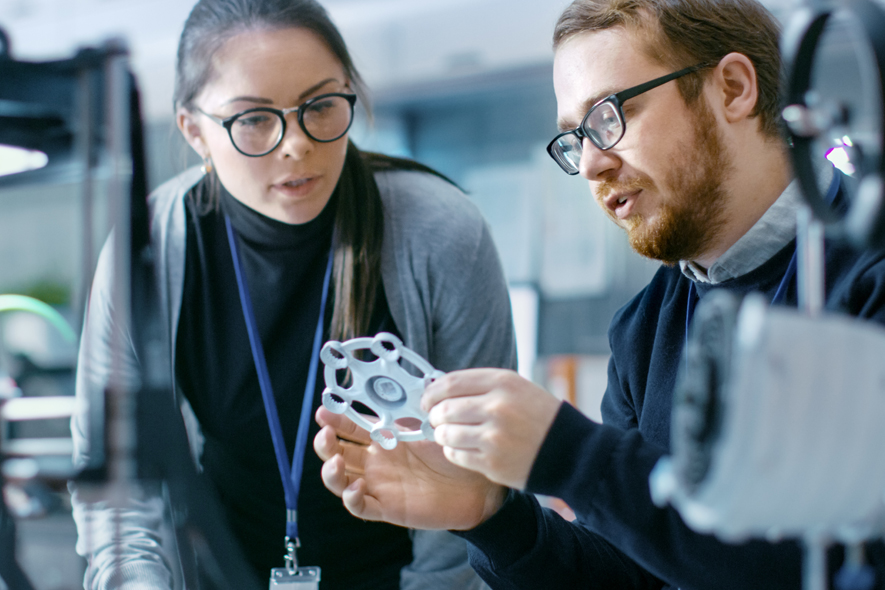Optical Metrology: The key to quality control in additive manufacturing
While 3D printing has been around for quite some time, it has only recently come of age as manufacturers are realizing that the technology can be used for more than just prototyping. In fact, today’s forward-thinking manufacturers are implementing 3D printing to accelerate their entire product development processes.

Designers and manufacturers now overcome fabrication limitations with 3D printing
Nowadays, 3D printing technologies can quickly produce functional and highly complex objects from hundreds of different types of materials—with none of the cutting, bending and injection limitations of traditional fabrication methods. Moreover, 3D printing applied to manufacturing can reduce total investment in machines, tools, assembly, and materials.
However, while additive manufacturing has definitely changed the way products are made and offers unprecedented versatility, inspection, and quality control issues nevertheless remain. How can quality control teams verify if objects with complex shapes are made according to original design intent, technical specifications and required norms? And while new 3D printers are designed specifically for additive manufacturing to ensure quality repeatability for long production runs, what are the solutions to mitigate defects and material waste?
This is where 3D scanners come into play. 3D scanners are a non-contact means to quickly characterize object surfaces so as to test and control part quality. Non-destructive testing using coherent light can find minuscule defects, discover when materials deviate from standard, measure and report on surface issues, and more. Unlike more manual methods, including coordinate-measuring machines, portable 3D scanners often don’t require hard setup and the part doesn’t have to go to a metrology lab.

Portable 3D scanners can find minuscule defects without requiring hard setup
The latest models gather millions of measurements in seconds, supplying the results automatically into interpretive software. The Creaform HandySCAN BLACK |Elite, for example, features high-end cameras, blue laser technology and advanced algorithms for fast metrology-grade measurements. It is a handheld scanner, usable in any environment and on any surface. It captures 1.3 million points per second, automatically generating a 3D mesh twin of the scanned object.
|Elite, for example, features high-end cameras, blue laser technology and advanced algorithms for fast metrology-grade measurements. It is a handheld scanner, usable in any environment and on any surface. It captures 1.3 million points per second, automatically generating a 3D mesh twin of the scanned object.
High-resolution, handheld 3D scanning brings inspection to the production line. These new optical solutions introduce innovative concepts like self-positioning and dynamic referencing, which enables the measuring device to be continuously locked to the part by an optical link. Specialized accompanying software turns these millions of points into coherent 3D mesh models, easily incorporated into other software tools as required.

Combined, 3D scanning and 3D printing optimize the whole manufacturing process.
Taking 3D scanning to 3D printing makes it possible to more rapidly test for quality. Research shows QC issues will vary according to the 3D printing process in use, the amount of copies made in one production run, and more. Warping is a problem, for example, in thermoplastic products with elongated horizontal rectangular shapes but not as much for vertical shapes. Such warping is usually not found in the first part printed, but happens when the printer is used for long periods. Such issues are not simple to predict; the potential for deviation from the norm is a four-part problem of 3D printer make and model; the material in use; the specific 3D print method; and the length of the production run.
Time compression is one important reason manufacturers turn to Additive Manufacturing, so it is important the time gained using high-resolution 3D scanning isn’t lost during the subsequent inspection phase. To streamline the QC process Creaform offers its VXinspect software as part of 3D scanning suite. It automates the process of setting up and running a full geometric dimensioning and tolerance (GD&T) inspection. The mesh created with their 3D scanners can be compared directly against the CAD data used to create the 3D printed object.
software as part of 3D scanning suite. It automates the process of setting up and running a full geometric dimensioning and tolerance (GD&T) inspection. The mesh created with their 3D scanners can be compared directly against the CAD data used to create the 3D printed object.

Streamline the whole inspection process with a complete and integrated solution
The HandySCAN BLACK is ready for use in creating new quality control processes for additive manufacturing. Scanned data converted to a 3D mesh in VXinspect can be exported to a variety of leading engineering and modeling software products including various 3D Systems Geomagic solutions; InnovMetric Software PolyWorks; Dassault CATIA V5 and SOLIDWORKS; PTC Creo; Siemens NX and Solid Edge; and Autodesk Inventor, Alias, 3ds Max, and Maya. The scanner is set to calculate positioning based on reflective targets to guarantee accuracy regardless of the environment. Part size can be anywhere from 0.05 meters to 4 meters with a measurement resolution of 0.05 mm.
All traditional manufacturing processes now include built-in quality control; there are yet no commonly accepted processes for QC in additive manufacturing. The leading national and international standards agencies are working on a common set of guidelines, but the final details suitable for all additive manufacturing processes are years away. For now, digital inspection using 3D scanning allows progressive manufacturers to create internal, repeatable, and accurate inspection workflows for their additive manufacturing projects. The body of data gathered with 3D scanning will be essential in the creation of artificial intelligence deep learning algorithms, required to take quality control in additive manufacturing to the next level.
The post Optical Metrology: The key to quality control in additive manufacturing appeared first on 3DPrint.com | The Voice of 3D Printing / Additive Manufacturing.
